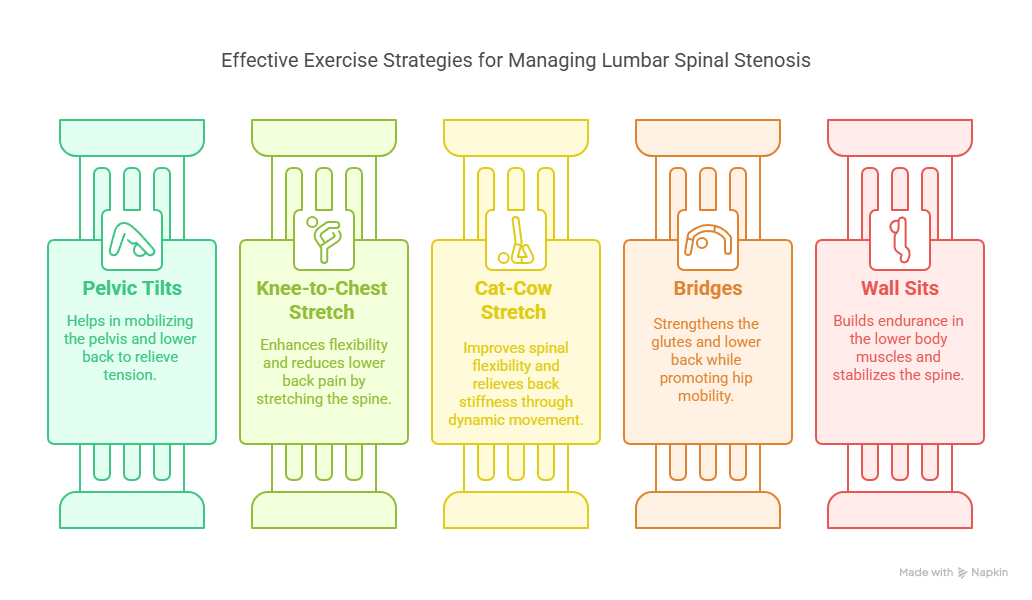

Medically Reviewed by Dr. Chirag Arora
Written by Swasthya Saarthi Editorial Team, last updated on 10 April 2025

Lumbar spinal stenosis is a condition that occurs when the space around the spinal cord and nerves in the lower back narrows, putting pressure on the spinal cord and the nerves that travel through the spine. This narrowing often results in lower back pain, leg pain, and other uncomfortable symptoms that can significantly affect your daily life. While it's common for people to experience some back discomfort as they age, ignoring persistent or worsening pain could be detrimental. Understanding spinal stenosis, its causes, symptoms, and treatments can help you address the condition before it leads to more severe complications.
Lower Back Pain Causes and Treatment: Everything You Need to Know
Targeted Non-Surgical Treatments for Back Pain: Effective Options for Relief
Spinal stenosis is usually a result of degenerative changes in the spine, but other factors can contribute to the narrowing of the spinal canal. Some of the most common causes include:
Other less common causes can include spinal infections, tumors, or a history of spinal trauma.
The symptoms of lumbar spinal stenosis vary depending on the severity of the condition and the extent of nerve compression. Common symptoms include:
Weakness in the Legs: Weakness that may make it difficult to stand up or walk, increasing the risk of falls.
You should seek medical advice if you experience any of the following symptoms:
If you suspect you have lumbar spinal stenosis, you should consult a general practitioner (GP) to start the diagnostic process. Based on your symptoms, your GP may refer you to:

Physical therapy and targeted exercises are essential components of managing spinal stenosis. The following exercises can help relieve pain, improve mobility, and strengthen the muscles supporting the spine:
Always consult a physical therapist before starting any exercises to ensure they’re appropriate for your condition.
Treatment for lumbar spinal stenosis depends on the severity of the condition and the impact on daily life. Common options include:
Conservative Treatments:
Surgical Treatments (if conservative measures don’t provide relief):
While some causes of lumbar spinal stenosis, such as aging, are inevitable, there are steps you can take to reduce the risk or delay its onset:

At Swasthya Saarthi, we offer a comprehensive approach to treating spinal stenosis. Our team of experts works closely with patients to develop a personalized treatment plan. Services include:
Spinal stenosis is a serious condition that can significantly affect your quality of life. Early diagnosis and treatment can prevent the condition from worsening and help you maintain mobility and independence. If you experience persistent lower back or leg pain, don't ignore it. Consult a healthcare professional to explore the appropriate treatment options.
A1: There is no cure for lumbar spinal stenosis, but symptoms can be managed effectively through physical therapy, medications, and in some cases, surgery.
A2: No, surgery is usually reserved for cases where conservative treatments have not provided relief.
A3: Recovery time varies depending on the type of surgery, but it generally takes several weeks to months.
A4: While you cannot prevent aging-related spinal changes, maintaining a healthy weight, exercising regularly, and practicing good posture can reduce the risk.
A5: Yes, one of the common symptoms of lumbar spinal stenosis is difficulty walking due to pain, weakness, or numbness in the legs.